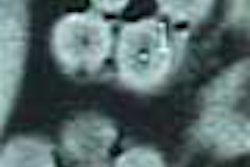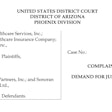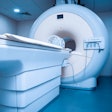A new study is adding fuel to the controversy over expert-witness testimony. The study found that medical experts commonly used by plaintiffs' attorneys routinely identify abnormalities on chest x-rays at a rate far higher than that of independent radiologists.
According to a study in Academic Radiology, a multidisciplinary group from Baltimore's Johns Hopkins Medical Institutions pitted chest radiograph interpretations by government-approved experts (called B readers) against independent reads by consulting radiologists. Physicians must be certified as B readers before they can be used as expert witnesses by plaintiffs' attorneys.
The Johns Hopkins researchers found that B readers interpreted radiographs as positive for asbestos-related changes in nearly all of the cases, versus less than 5% of the consulting radiologists looking at the same cases.
"The films in this study were obtained originally by plaintiffs' attorneys, read by initial (B) readers of their choice, and, on the basis of the reader's conclusion, used by the attorneys to support litigation on behalf of the individual represented on the film," explained Dr. Joseph Gitlin and colleagues (Academic Radiology, August 2004, Vol. 11:8, pp. 843-856).
Under U.S. law, people who claim occupationally related respiratory disease or disability (impairment of pulmonary function, mesothelioma) must support their case with a posteroanterior (PA) x-ray. The B reader certification is offered by the National Institute for Occupational Safety and Health. About 700 radiologists and other physicians hold B reader certification (For a list of current B readers, click here).
Gitlin's group amassed 551 chest radiographs that were deemed positive for lung changes by initial B readers retained by plaintiffs' attorneys. Six chest radiologists and pulmonologists agreed to reinterpret the x-rays. The study results are based on a dataset of 492 film readings by the B readers and 2,952 interpretations by the consultants.
The results showed that the initial readers interpreted the x-rays as positive for parenchymal abnormalities in 95.9% of the 492 cases. In contrast, the six consultants classified the films as positive in 4.5% of their readings.
Moreover, the initial readers found that 66.5% of the films were of good quality, versus 33.4% for the consulting readers. The B readers rated 9.1% of the films as poor quality and none of the films as unreadable. In comparison, consultants dismissed 13.2% of the x-rays as poor and completely rejected 5%.
When asked if the films showed "any parenchymal abnormalities consistent with pneumoconiosis," the initial B readers answered "yes" in 97.2% of the interpretive reports. The consulting readers answered the same question with a "no" in 88.4%, according to Gitlin's group.
"There is less than one chance in 10,000 that the difference noted between the two groups of readers is due to chance alone," the study authors asserted.
In an accompanying editorial, Dr. Murray Janower and Dr. Leonard Berlin acknowledged that previous research has found a 30% variance in the interpretations of chest radiographs.
"However, the fact is that none of these previously published studies have shown variations to the same extent," they wrote. "(The) article by Gitlin is disturbing for it raises the question of whether objectivity and truthfulness among certain B reader radiologists have been supplanted by partisanship and ... departure from the truth driven by financial gain."
By Shalmali Pal
AuntMinnie.com staff writer
August 6, 2004
Related Reading
ACR expels member for improper lawsuit testimony, July 9, 2004
Medical malpractice legislation: An all-around non-starter? July 8, 2004
AMA delegates chastise doctor for suggesting care refusal to plaintiff attorneys, June 14, 2004
ACR weighs more allegations over expert testimony, April 27, 2004
Copyright © 2004 AuntMinnie.com



















